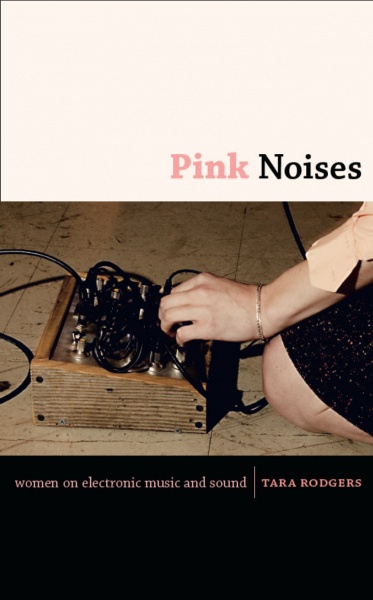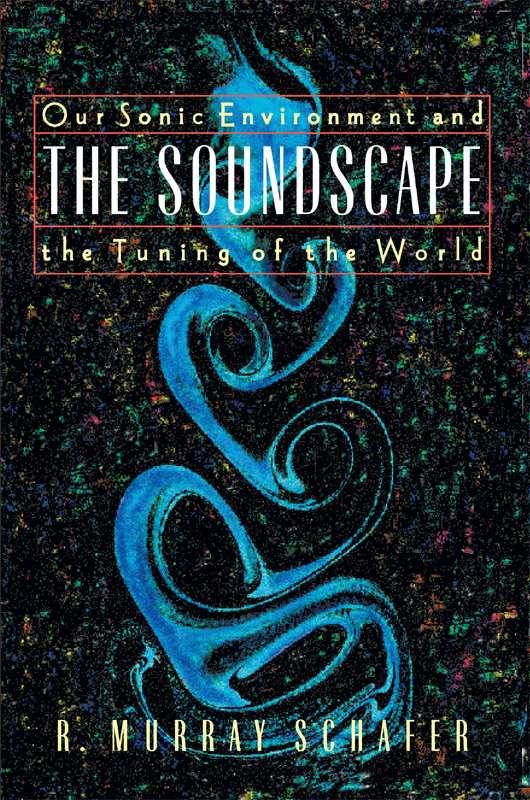Tara Rodgers: Pink Noises: Women on Electronic Music and Sound (2010)
Filed under book | Tags: · composing, electronic music, feminism, gender, music, performance, sound, sound art, technology, voice, women

Pink Noises brings together twenty-four interviews with women in electronic music and sound cultures, including club and radio DJs, remixers, composers, improvisers, instrument builders, and installation and performance artists. The collection is an extension of Pinknoises.com, the critically-acclaimed website founded by musician and scholar Tara Rodgers in 2000 to promote women in electronic music and make information about music production more accessible to women and girls. That site featured interviews that Rodgers conducted with women artists, exploring their personal histories, their creative methods, and the roles of gender in their work. This book offers new and lengthier interviews, a critical introduction, and resources for further research and technological engagement.
Contemporary electronic music practices are illuminated through the stories of women artists of different generations and cultural backgrounds. They include the creators of ambient soundscapes, “performance novels,” sound sculptures, and custom software, as well as the developer of the Deep Listening philosophy and the founders of the Liquid Sound Lounge radio show and the monthly Basement Bhangra parties in New York. These and many other artists open up about topics such as their conflicted relationships to formal music training and mainstream media representations of women in electronic music. They discuss using sound to work creatively with structures of time and space, and voice and language; challenge distinctions of nature and culture; question norms of technological practice; and balance their needs for productive solitude with collaboration and community. Whether designing and building modular synthesizers with analog circuits or performing with a wearable apparatus that translates muscle movements into electronic sound, these artists expand notions of who and what counts in matters of invention, production, and noisemaking. Pink Noises is a powerful testimony to the presence and vitality of women in electronic music cultures, and to the relevance of sound to feminist concerns.
Interviewees: Maria Chavez, Beth Coleman (M. Singe), Antye Greie (AGF), Jeannie Hopper, Bevin Kelley (Blevin Blectum), Christina Kubisch, Le Tigre, Annea Lockwood, Giulia Loli (DJ Mutamassik), Rekha Malhotra (DJ Rekha), Riz Maslen (Neotropic), Kaffe Matthews, Susan Morabito, Ikue Mori, Pauline Oliveros, Pamela Z, Chantal Passamonte (Mira Calix), Maggi Payne, Eliane Radigue, Jessica Rylan, Carla Scaletti, Laetitia Sonami, Bev Stanton (Arthur Loves Plastic), Keiko Uenishi (o.blaat)
Publisher Duke University Press, 2010
ISBN 0822346737, 9780822346739
322 pages
Review (Tiffany Naiman, Ethnomusicology Review)
Review (Mary Simoni, Computer Music Journal)
Review (Betsey Biggs, Women and Music: A Journal of Gender and Culture)
Download (removed on 2013-12-13 upon request of the publisher)
View online (partial version, HTML, added on 2014-1-14)
R. Murray Schafer: The Soundscape: Our Sonic Environment and the Tuning of the World (1977–) [EN, PT]
Filed under book | Tags: · acoustics, environment, sound, sound design, theory

“The soundscape–a term coined by the author–is our sonic environment, the ever-present array of noises with which we all live. Beginning with the primordial sounds of nature, we have experienced an ever-increasing complexity of our sonic surroundings. As civilization develops, new noises rise up around us: from the creaking wheel, the clang of the blacksmith’s hammer, and the distant chugging of steam trains to the “sound imperialism” of airports, city streets, and factories. The author contends that we now suffer from an overabundance of acoustic information and a proportionate diminishing of our ability to hear the nuances and subtleties of sound. Our task, he maintains, is to listen, analyze, and make distinctions.
As a society we have become more aware of the toxic wastes that can enter our bodies through the air we breathe and the water we drink. In fact, the pollution of our sonic environment is no less real. Schafer emphasizes the importance of discerning the sounds that enrich and feed us and using them to create healthier environments. To this end, he explains how to classify sounds, appreciating their beauty or ugliness, and provides exercises and “soundwalks” to help us become more discriminating and sensitive to the sounds around us. This book is a pioneering exploration of our acoustic environment, past and present, and an attempt to imagine what it might become in the future.”
First published as The Tuning of the World, Knopf, New York, 1977.
This edition
Publisher Destiny Books, Rochester, VT, 1994
ISBN 9781594776687, 0892814551
xii+301 pages
The Soundscape (English, 1977/1994, updated on 2019-10-29)
A afinação do mundo (Brazilian Portuguese, trans. Marisa Trench Fonterrada, 1997, added on 2014-12-19)
Staalzine, 2 (2013)
Filed under magazine | Tags: · cassette culture, diy, mail art, music, sound

“The second edition of Staalzine is dedicated to fifty years of tapes. We offer the picture and the story that explain why tape had some importance in someone’s life at a given time.” (from the Editorial)
Publisher Staalplaat, Berlin, November 2013
Comment (0)
